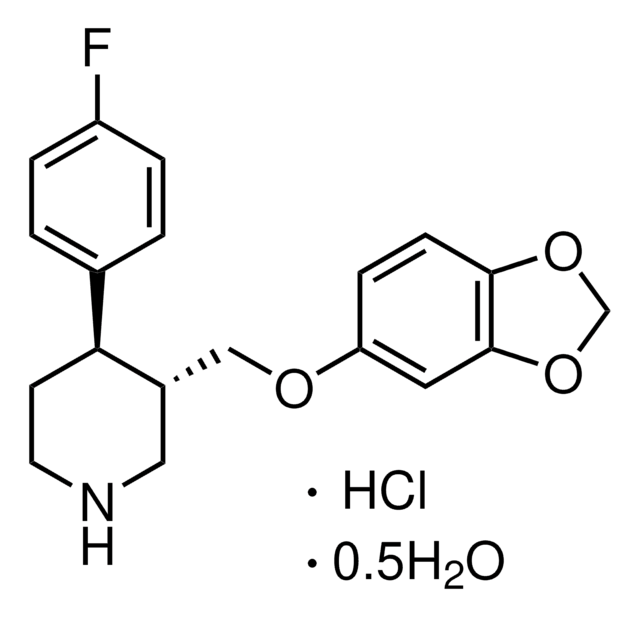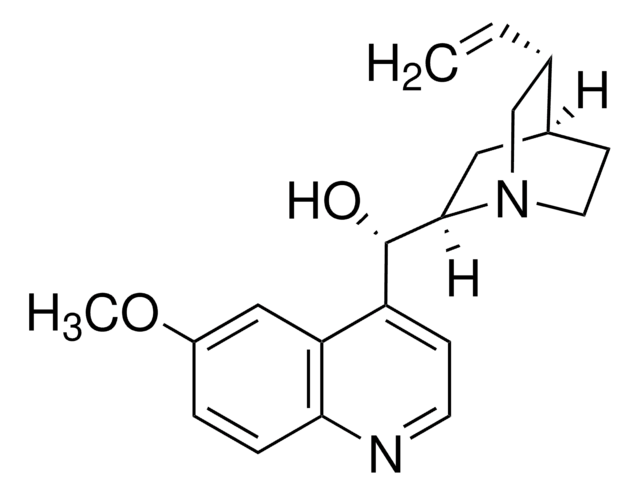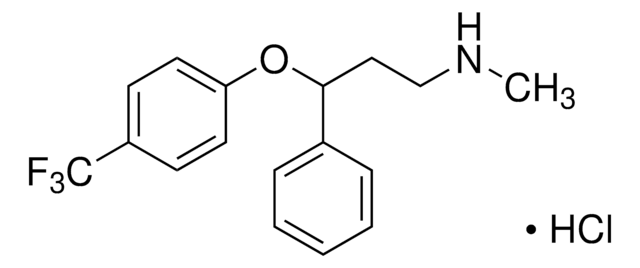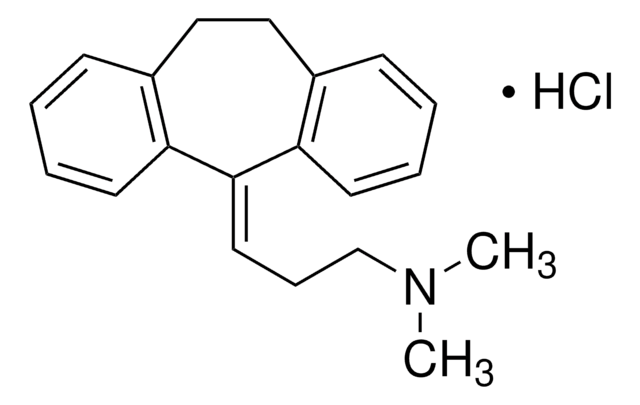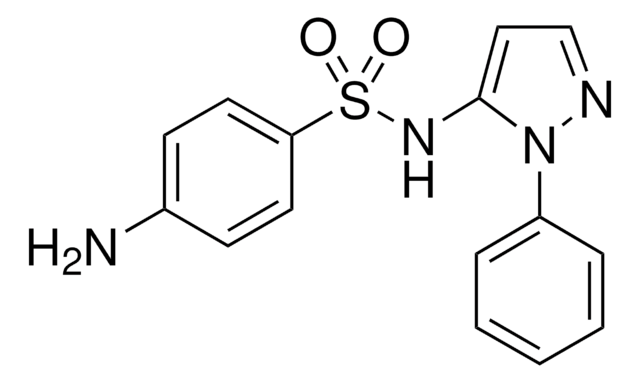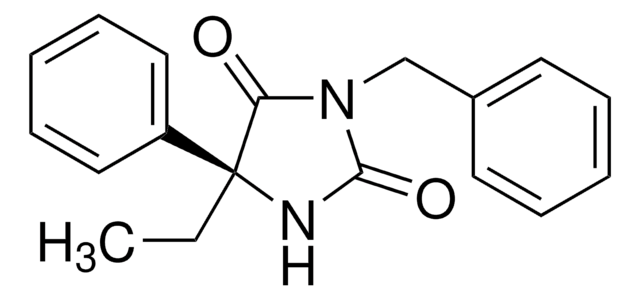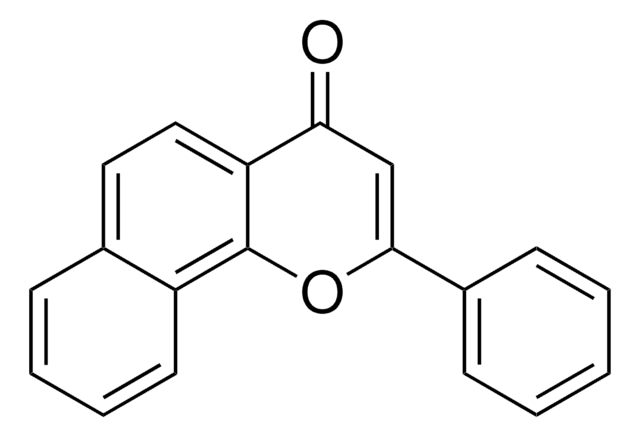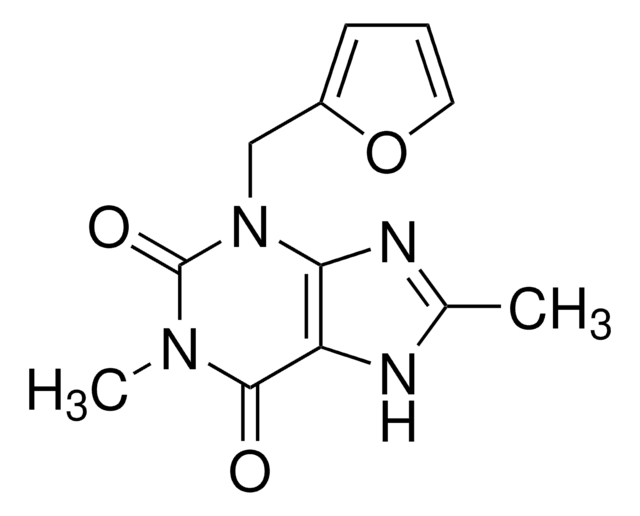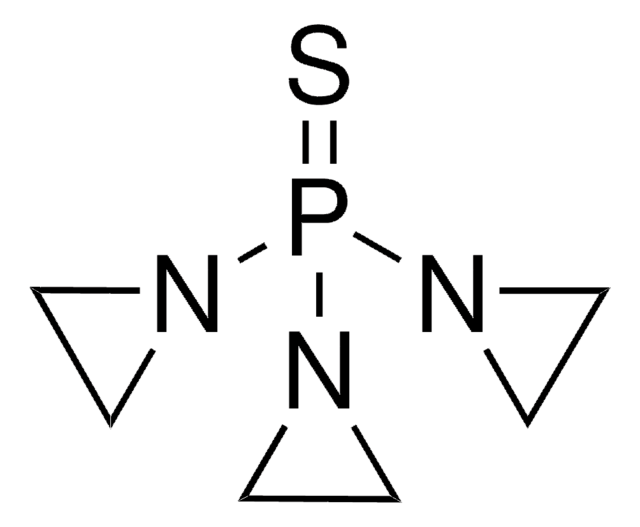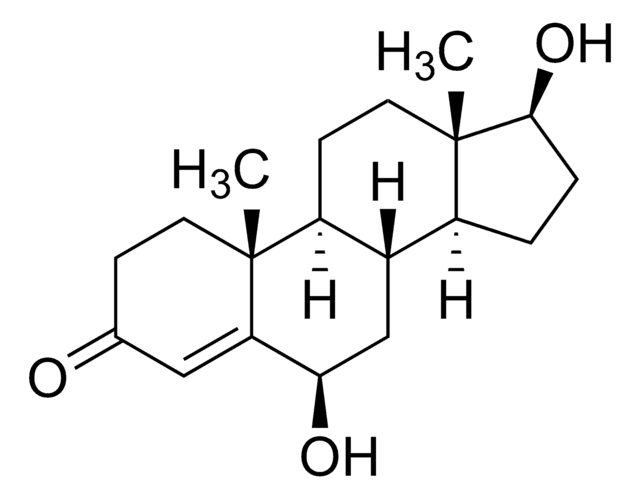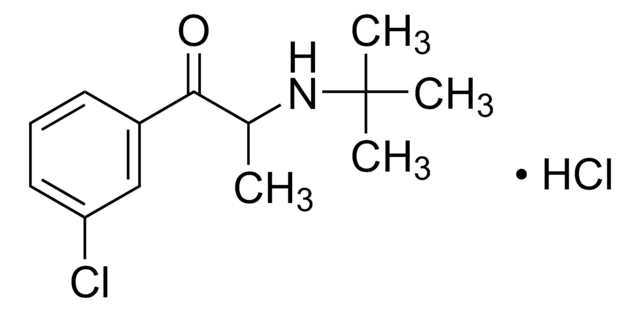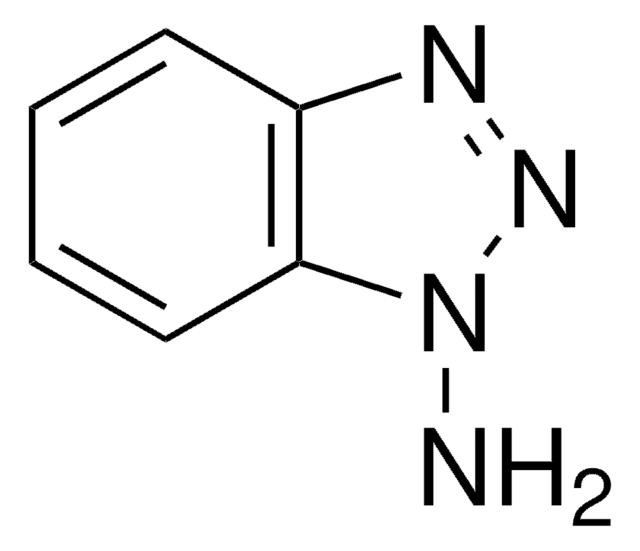SML0505
Tienilic Acid
≥98% (HPLC)
Synonym(s):
Ticrynafen, Tienylic acid, [2,3-Dichloro-4-(2-thienylcarbonyl)phenoxy]-acetic acid
Sign Into View Organizational & Contract Pricing
All Photos(1)
About This Item
Empirical Formula (Hill Notation):
C13H8Cl2O4S
CAS Number:
Molecular Weight:
331.17
EC Number:
MDL number:
UNSPSC Code:
12161501
PubChem Substance ID:
NACRES:
NA.77
Recommended Products
Quality Level
Assay
≥98% (HPLC)
form
powder
color
white to beige
solubility
DMSO: 5 mg/mL (clear solution)
shipped in
wet ice
storage temp.
−20°C
SMILES string
OC(=O)COc1ccc(c(Cl)c1Cl)C(=O)c2cccs2
InChI
1S/C13H8Cl2O4S/c14-11-7(13(18)9-2-1-5-20-9)3-4-8(12(11)15)19-6-10(16)17/h1-5H,6H2,(H,16,17)
InChI key
AGHANLSBXUWXTB-UHFFFAOYSA-N
Biochem/physiol Actions
Tienilic Acid (Ticrynafen) is a P450 inhibitor, a specific suicide substrate for CYP2C9 and CYP2C10. It was once used as a loop diuretic drug with uric acid-lowering (uricosuric) actvity, but was removed from market because of hepatotoxicity.
Storage Class Code
11 - Combustible Solids
WGK
WGK 3
Flash Point(F)
Not applicable
Flash Point(C)
Not applicable
Choose from one of the most recent versions:
Already Own This Product?
Find documentation for the products that you have recently purchased in the Document Library.
Customers Also Viewed
Daisuke Satoh et al.
PloS one, 12(10), e0187072-e0187072 (2017-10-25)
The utility of HepG2 cells to assess drug metabolism and toxicity induced by chemical compounds is hampered by their low cytochrome P450 (CYP) activities. To overcome this limitation, we established HepG2 cell lines expressing major CYP enzymes involved in drug
Peter M Rademacher et al.
Chemical research in toxicology, 25(4), 895-903 (2012-02-15)
The uricosuric diuretic agent tienilic acid (TA) is a thiophene-containing compound that is metabolized by P450 2C9 to 5-OH-TA. A reactive metabolite of TA also forms a covalent adduct to P450 2C9 that inactivates the enzyme and initiates immune-mediated hepatic
Use of isotopes and LC-MS-ESI-TOF for mechanistic studies of tienilic acid metabolic activation.
M Belghazi et al.
Advances in experimental medicine and biology, 500, 139-144 (2002-01-05)
Hideo Takakusa et al.
Drug metabolism and disposition: the biological fate of chemicals, 36(5), 816-823 (2008-01-30)
The metabolic activation of a drug to an electrophilic reactive metabolite and its covalent binding to cellular macromolecules is considered to be involved in the occurrence of idiosyncratic drug toxicity (IDT). As a cellular defense system against oxidative and electrophilic
Takayoshi Nishiya et al.
Toxicology and applied pharmacology, 232(2), 280-291 (2008-08-19)
To investigate the hepatotoxic potential of tienilic acid in vivo, we administered a single oral dose of tienilic acid to Sprague-Dawley rats and performed general clinicopathological examinations and hepatic gene expression analysis using Affymetrix microarrays. No change in the serum
Our team of scientists has experience in all areas of research including Life Science, Material Science, Chemical Synthesis, Chromatography, Analytical and many others.
Contact Technical Service
